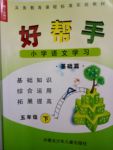题目内容
阅读理解
Every hour spent outdoors each week can reduce a child's chance of becoming short-sighted by two per cent. Children who are short-sighted spend an average of 3. 7 fewer hours a week outside compared with those who have normal vision, a study has found.
Short-sightedness runs in families and has also been linked to a host of factors. They include the amount of time spent focusing on near objects and levels Gf physical activity. But simply spending time out of the house may be enough to protect the eyesight. Being outdoors can reduce the amount of time that children spend in reading or playing computer games, researchers said.
Between 15 and 20 per cent of British people are short-sighted, but the problem is much more serious in parts of East Asia. There, as much as 80 per cent of the population is short-sighted. One ?tudy compared children living in different countries. It found that those in Australia had better vision on average than people of the same age in China and Singapore. The Australian group read and achieved as much as those in other countries, but they were found to spend more time outdoors.
Dr Sherwin, one of the researchers who did the study, said the benefit from being outdoors could be linked to increased UV radiation(紫外线辐射).Short?sightedness is caused by having longer eyes and some studies have shown that some chemicals affected by UV rays may control the length of the eye. A lack of sunlight could make such chemicals grow too much, he explained.
He said, "It could be caused by not enough UV radiation, and it could also be caused by spending less time looking into the distance or not enough physical activity.”
1. What is the main idea of the passage?
A. Children's short-sightedness can be cured.
B. There are several causes of children's short?sightedness.
C. Spending more time outdoors can lead to better eyesight.
D. Children who spend more time outdoors are much healthier.
2.What does the underlined word "They" in Paragraph 2 refer to?
A. Near objects,
B. Levels of physical activity.
C. Families which have short-sightedness.
D. Some factors linked to short-sightedness.
3. According to Paragraph 3, in the study children in Australia .
A. achieved less
B. had poorer eyesight
C. stayed outdoors more
D. spent less time reading
4. Which of the following is NOT mentioned by Dr Sherwin as a cause of short-sightedness?
A. Receiving too Utile UV radiation.
B. Not taking part in enough physical activities.
C. Spending little time looking into the di.stance.
D. Not eating enough food that is good for our eye?sight.
[文章大意]增加户外活动的时间可降低儿童患近视的概率。
1.C主旨大意题。本文主要是关于一项研究的结果,这项研究表明多花些时间待在户外可以降低儿童患近视的概率,故选c。
2.D推理判断题。根据画线词前面的a host of factors和后面的"…the amount of time spent focusing on near objects and levels of physical activity."可知,画线词They是指那些能导致近视的因素。
3. C细节理解题。根据第三段的"The Australian group read and achieved as much as those in other countries, but they were found to spend more time outdoors."可知应选C。
4.D 细节理解题。根据末段的"He said, 'It could be caused by not enough UV radiation, and it could also be caused by spending less time looking into the distance or not enough physical activity.'"可知,这里提到了紫外线照射、远望以及体育运动,并没有提到食物方面,故选D。

 小学学习好帮手系列答案
小学学习好帮手系列答案 小学同步三练核心密卷系列答案
小学同步三练核心密卷系列答案